Another feather in the Duchess of Cambridge’s cap on Pakistan tour
The Duke and Duchess of Cambridge retrace the steps of Diana on their visit to the remote region of Chitral in northern Pakistan.

When the Duke and Duchess of Cambridge arrived by helicopter in the Hindu Kush, it was meant to be a day highlighting the challenges faced by Pakistan over climate change.
But it was also about hats.
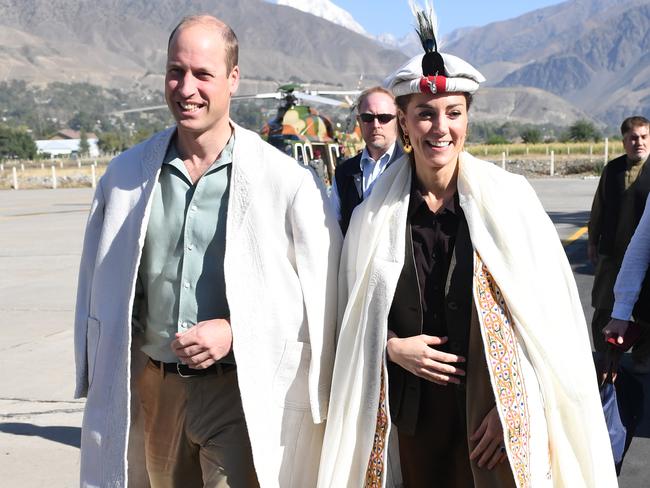
In an echo of the visit made by William’s mother to the same place 28 years ago, the duchess was given a traditional Chitrali hat and white coat.
The duke was also presented with a book commemorating his mother’s visit, when she also received an almost identical feathered cap and white coat. In 1991 the princess took a private plane to Chitral in northern Pakistan.
The local women had been kept inside and, surrounded by men, Diana was made an honorary Chitrali Scout and given an embroidered white coat and beret, complete with feather, before taking her seat as the guest of honour.
As William was presented with his own matching coat and hat, Kate remarked: “It’s amazing — all that embroidery.”
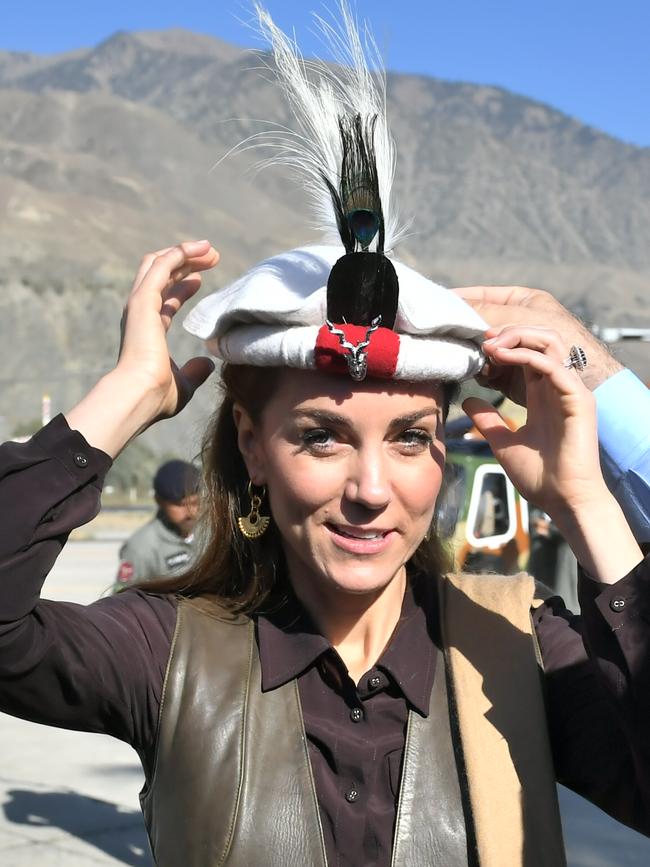
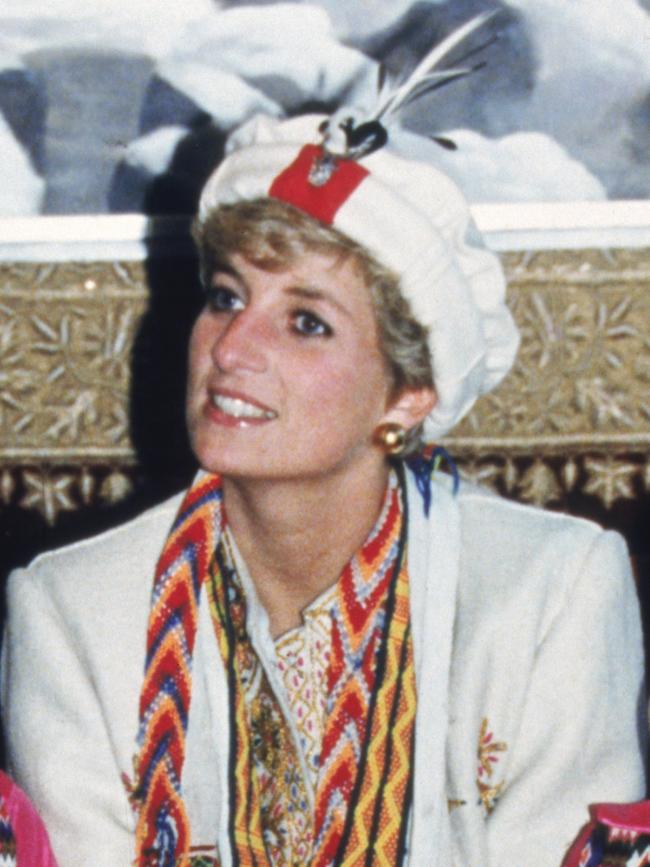
The duchess wore a long taupe-coloured skirt and a darker coloured shirt under a leather vest for the visit. She opted for flat knee-high brown boots suitable for the rocky terrain, accessorised with gold earrings and a beige pashmina, while William wore a pale teal shirt and beige chino trousers.

The purpose of the trip on the third day of their tour was to see a melting glacier, a sight that prompted the duke to say that more education, awareness and political action was needed to tackle climate change.
William and Kate overlooked the northern tip of the Chiatibo Glacier in Broghil National Park and were shown how it has retreated rapidly in recent years due to global warming.
It was the first time the couple had witnessed a melting glacier. Accompanied by glacier expert Dr Furrukh Bashir, the duke said communities “vulnerable to change” needed “more education, more awareness and political action”.
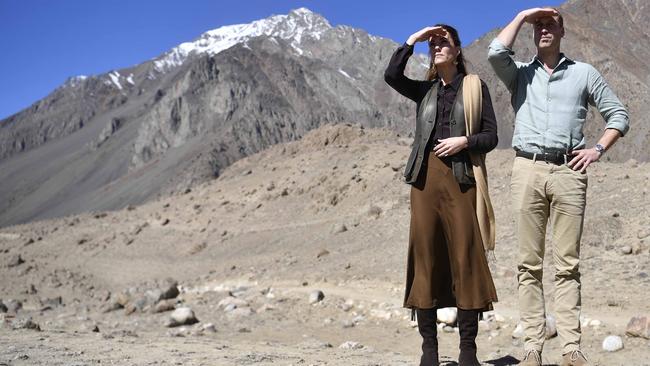
“The young are starting to get engaged in it,” he said, adding that a “positive conversation” around climate change was required.
His geography background was also mentioned during the visit in the snowy mountain peaks, prompting amusement from the couple.
The duke said: “Dr Warren my geography teacher would be well impressed that I’m back at a glacier after all these years.”
“I’ve been very impressed by William’s geography,” a smiling Kate said.
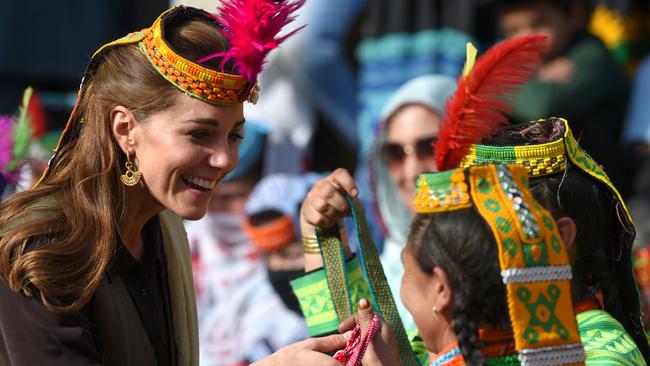
William appeared eager to learn more about the glacier, asking Dr Bashir questions about its size and flooding.
Glaciers in the mountain range that joins together in northern Pakistan, the Hindu Kush, Karakoram and the Himalayas, provide water for 1.6 billion people.
There are more than 5000 reasonable sized glaciers in the area, but nearly 70 per cent of them are retreating, according to Dr Bashir, of the Pakistan Meteorological Department.
A glacier, made of highly compressed snow that turns to ice, needs more snowmelt than snowfall and low temperatures found at a high altitude, he said.
Global warming has made the Chiatibo Glacier retreat by about 10m a year due to higher temperatures melting the ice.
The first threat from the glacier melting is flooding to communities downstream, while the second is removing the water supply completely — which provides for 200 million people in Pakistan.
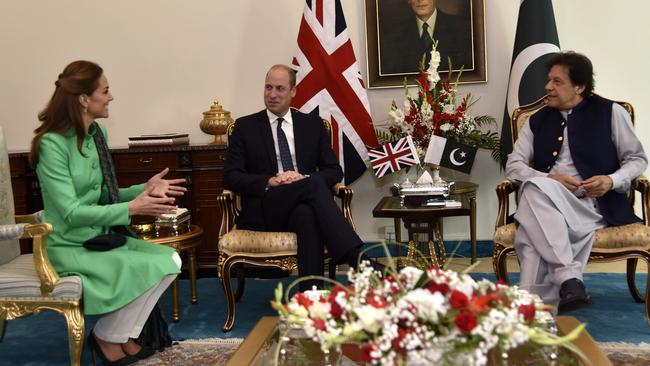
“Scientific communities have agreed global warming is causing glacial retreat,” Dr Bashir said.
“These glaciers are retreating and telling you that climate change is real, global warming is real. A quarter of humanity are dependent on these glaciers.”
In a speech on Tuesday evening, the duke urged the UK and Pakistan to “work together” amid an “impending global catastrophe” over climate change.
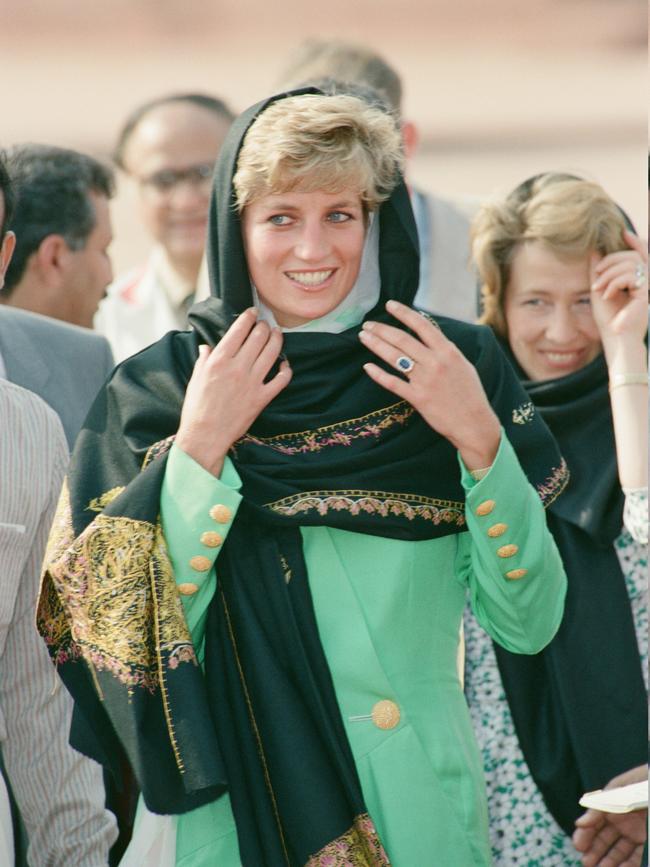

On the visit of the duke and duchess, who are hoping to highlight climate change issues in the area, Dr Bashir said: “They are highly influential people and they have a permanent position.
“If we convince them that this is happening because of climate change, global warming, greenhouse gases.
“Hopefully they will advocate to reverse global warming and climate change.”



To join the conversation, please log in. Don't have an account? Register
Join the conversation, you are commenting as Logout